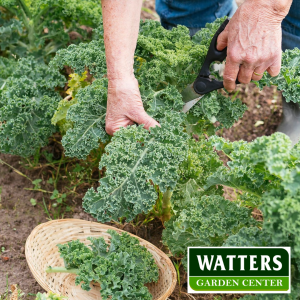September is the start of our third planting season. Plant, eat and enjoy!
Plant seeds deeper in the fall than in the spring. Typically, the ground is warmer, having just come off the hot summer months. By planting your seeds a little deeper than the package suggests, you’ll be able to get them down to where the soil is cool and moist.
Best Vegetables to Grow in an Autumn Garden
Beets, Beta Vulgaris, are best grown from seed without disturbing their roots once sprouted. Although beets grow in the summer heat, they are often bitter and woody. Late summer to early fall is the best time to resume succession planting at two- to three-week intervals. Beet bulbs keep growing in the garden until a deep freeze. Even the tops handle frost.
USDA Growing Zones: 2-11
Sun Exposure: Full sun, partial shade
Broccoli, Brassica oleracea, grows best in cool weather. Fall planting has two big advantages over spring planting when it comes to broccoli. There is no risk of early spring frost that often stunts the growth of young broccoli plants, so plants get off to a strong start. As your florets form, the cool autumn air keeps them from bolting into flowers, giving you more time to harvest. Broccoli does take several weeks to mature, so transplant a quick grower, like Waltham, for a timely fall harvest.
USDA Growing Zones: 3-10
Sun Exposure: Full sun
Cabbage, Brassica oleracea, Autumn is the perfect growing weather for cabbage. While plants can grow in warmer weather, they need cooler temperatures to form a head. Cabbage needs anywhere from 90-120 days to mature, so a fall crop will be most likely if you transplant seedlings in mid- to late summer. Most varietals in the cabbage family are hardy enough to handle light frost, so, with any protection, you can harvest them well into winter. Though they won’t continue to grow when it’s cold, they’ll retain their freshness and get even sweeter.
USDA Growing Zones: 1-9
Sun Exposure: Full sun, partial shade
Cauliflower, Brassica oleracea, fall is typically a better time to grow cauliflower than in the spring, as the cool weather keeps the heads tight and tender. Cauliflower is a slow grower, often taking 2-3 months to mature. Plant them in early autumn for best results. Pluck the cauliflower when its head reaches the desired size and its buds are still tight.
USDA Growing Zones: 2-11
Sun Exposure: Full sun
Kale, Brassica oleracea, is probably the easiest cold crop to grow. The seeds quickly germinate in warm and cool soil. As Autumn turns to winter, kale leaves maintain their great leaf texture with a flavor that only sweetens and deepens with every cold night.
USDA Growing Zones: 7-9
Sun Exposure: Full sun, partial shade
Swiss Chard, Beta vulgaris, if you’ve already harvested your Swiss chard as cut-and-come-again, you won’t need to reseed in autumn. The plants have slowed down during the summer heat. With just a bit of cool air and water, they’ll ramp back into production come fall. They may even survive the winter, but harvest them quickly in spring before they start to bolt to seed and get harsh and bitter.
USDA Growing Zones: 3-10
Sun Exposure: Full sun, partial shade
Other popular mountain vegetables to plant now are arugula, bok choy, Brussels sprouts, carrots, collard greens, leeks, mustard greens, radishes and turnips.
September is the start of our third planting season. Plant, eat and enjoy!
Until next issue, I’ll be helping local gardeners extend their garden enjoyment here at Watters Garden Center. QCBN
By Ken Lain
Ken Lain can be found throughout the week at Watters Garden Center, 1815 W. Iron Springs Road in Prescott, or contacted through his web site at WattersGardenCenter.com or Top10Plants.com.






Leave a Reply